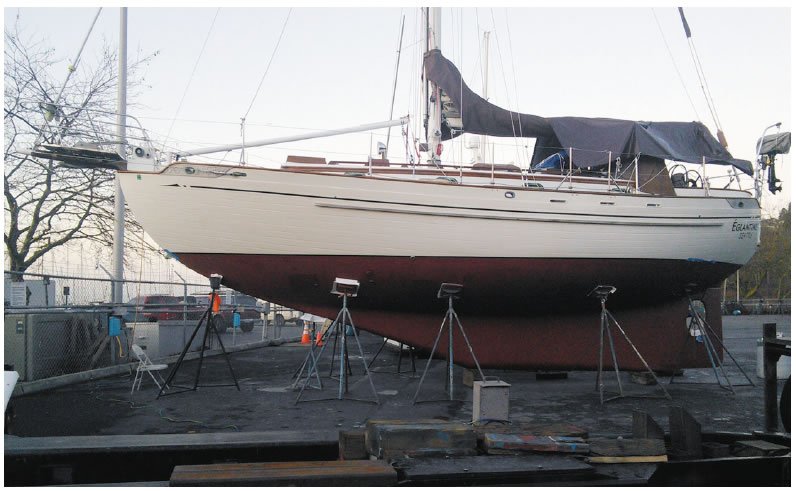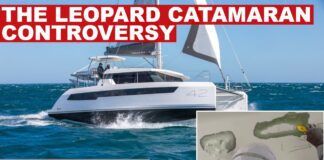
The hull of the Tayana 37 is a fairly heavy, solid-glass layup. Some roving print-through is evident in the topsides. In the past, the hull-to-deck joint has occasionally been a problem. There is no doubt it is strong, but there have been numerous reports of leaking.
Part of the problem with the hull-to-deck joint is the fact that the hull and deck moldings form a hollow bulwark extending well above the main deck level. This bulwark is pierced by hawsepipes and several large scuppers at deck level. Careful bedding of all fittings that penetrate the bulwarks is essential to avoid leaks. On new boats, the entire hollow bulwark is glassed over from inside the hull, greatly reducing the possibility of leaks. This results in an incredibly labor-intensive joint, but labor intensive is the name of the game in Taiwanese boatbuilding.
None of the numerous through-hull fittings is recessed flush with the exterior of the hull. The argument is frequently made that this is unnecessary on cruising boats. Nothing could be further from the truth. The cruising boat is frequently undercanvassed for her displacement and wetted surface. Add to this the low-speed drag associated with projections from the hull, and you have a boat that spends a lot of time motoring in light air, when she should be sailing. While the Tayana 37 is far from under canvassed, she could benefit from a little more bottom fairing as much as the next boat. An option to recessing the through-hull fittings would be to fair them in with large micro-balloon blisters-this is not as effective as recessing, but perhaps easier to do after the fact. The rudderstock is a substantial stainless-steel rod, with the rudder held on by welded arms riveted through the rudder blade. The heel fitting is a bronze casting. This is fastened to the hull with stainless-steel bolts. Inevitably, there will be galvanic action between the bronze and the stainless, with the fastenings coming out on the short end. There is provision for protection of the rudder straps with zincs.
All hardware, including stanchions, is through-bolted and backed with stainless-steel pads. Most hardware is fairly accessible from belowdecks.
The ballast keel is an iron casting dropped into the hollow fiberglass keel shelI. The casting is glassed over on the inside of the boat. We prefer an external lead keel for its shock absorbing qualities in case of grounding.
The glasswork of the Tayana 37 is of good quality. There are no rough edges, the fillet bonding is neat, and there is no glass or resin slopped about. Tayana guarantees the hull against defects for 10 years.
The standard steering system formerly was a Taiwanese worm-gear system copied from the Edson worm gear. Recurrent problems with this system, notably extremely sloppy and mushy steering, have resulted in significant changes. The steering was changed to a pedestal system-Taiwanese-built but remarkably similar to the Edson pedestal steering.
Seacocks are used on all through-hull fittings. The seacocks appear to be copies of U.S.-made Groco valves. Hoses to seacocks are all double clamped.









































Please ask Bob Perry what his relationship is with the builder as well as the first owner.
Thanks,
Redhawk